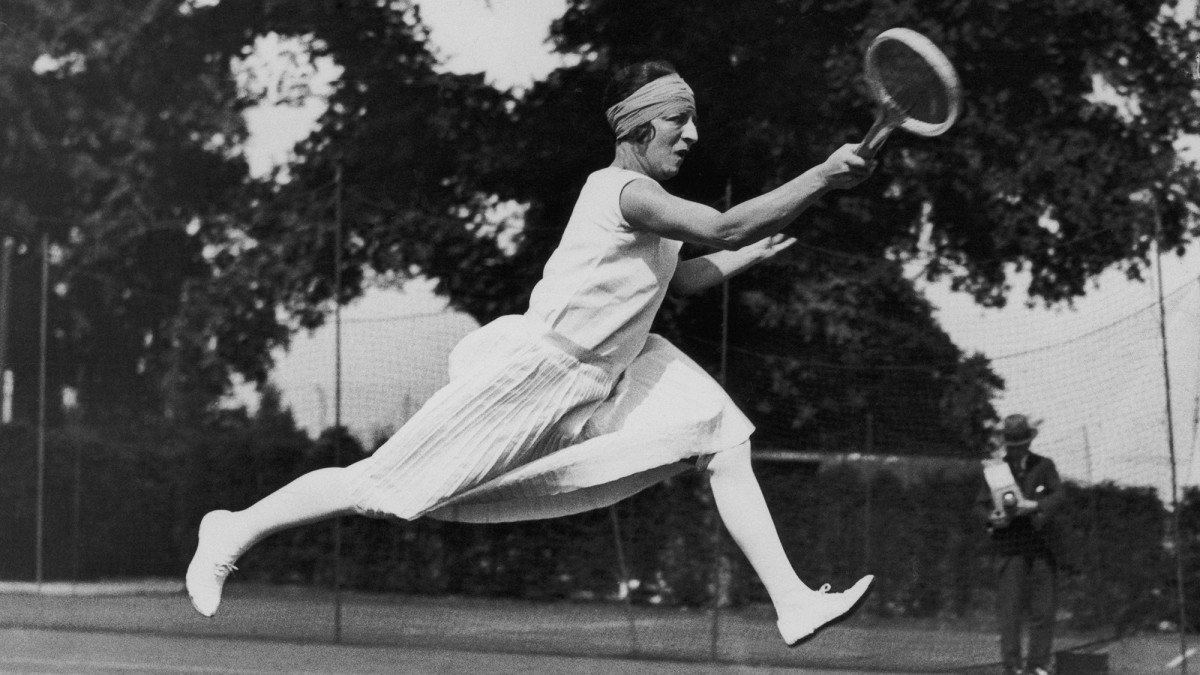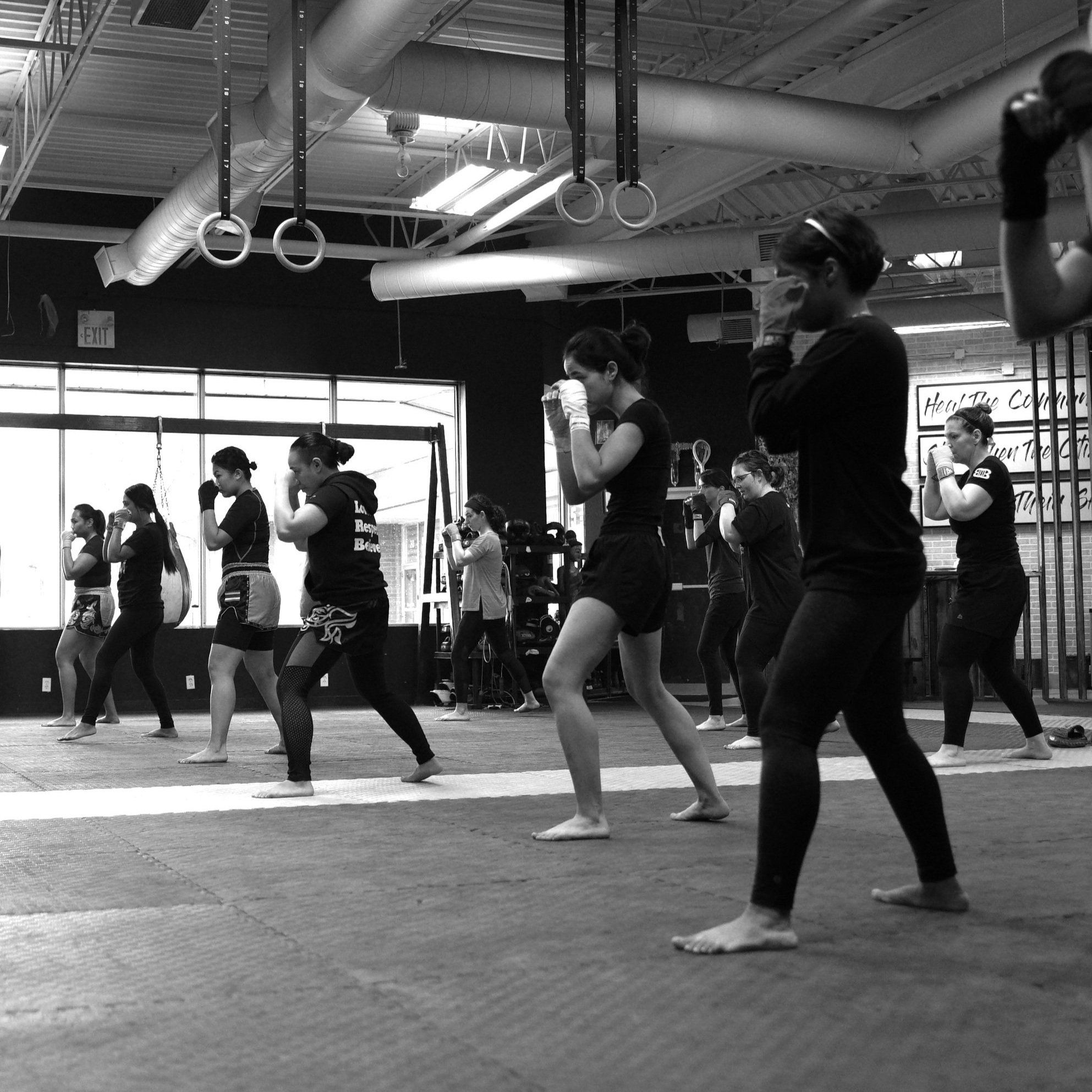Community of Practice for Women
The inclusion of women in physical training is relatively new. With the creation of all-female centers, women’s concerns about being in a male dominant industry are addressed through these safe spaces such as fitness studios and communities of practice. In order to fully understand the importance of all women’s spaces, we must understand how the past affects the present journey of women in training, and contrast the experience of individual to communal training.
Before the 20th and 21st centuries, athletics and training were exclusive to men. Women’s history in athletics and physical training is quite recent. The Olympic Games in 1900 was the first time in history that women were allowed to compete, but they were restricted to tennis, croquet, and golf, as these were not rigorous and “preserved” a woman’s femininity. Throughout the century, sports categories were gradually opened to female athletes: gymnastics in 1928, skiing in 1936, canoe-kayak in 1948, judo in 1992, ice hockey in 1998, wrestling in 2004, and boxing in 2012.
The inclusion of women in the Olympics wasn’t the only changing trend in female athletics. The rise of the fitness studio (the older equivalent to today’s large-scale fitness gyms), promoted healthy living through exercise. Training was no longer just for the athlete preparing for competition, training was also for the average citizen who wanted to improve their overall physical health.
The focus on training shifted from athletics to health in the later part of the 20th century and then to aesthetics in the 2000s. The popularization of social media included the trend “fitspiration” (a combination of “fitness” and “inspiration”), which promotes the training journey as a means to achieve aesthetically fit figures. “Fitspiration” is mostly followed by women, and the trend promised weight loss and toned physiques- is a common motivating factor for many women to start training at fitness clubs.
However, co-ed fitness clubs remain male-dominant. Many women feel discouraged to continue or even start their fitness journey because they don’t feel a sense of belonging and feel uncomfortable in a space surrounded mostly by men. Thus, all female fitness centers were created to address these concerns while providing a space to train. Despite the positive effect of training among other women (feeling a sense of belonging and safety), members of female-only fitness facilities continue to have negative experiences in these spaces:
For beginner trainees, individual training can lack structure and guidance which can lead to injury, confusion and boredom
Gym culture promotes the pursuit of aesthetics, which can trigger female members to continue looking at their bodies with self-deprecation when they do not meet body-image standards, or see other members who have met or exceeded them
Unlike modern fitness centers (co-ed or women’s only), martial arts schools can nullify these negative experiences. This is due to the structure of martial arts schools as a community of practice. The community of practice (CoP) is a space where members share their craft or expertise. The three traits of a community of practice are:
1. DOMAIN: the craft that is being taught
ie. In a martial arts school, the domain would be the style of martial art such as Muay Thai, jiujitsu, boxing, etc.
2. COMMUNITY: the members of the community that seek to learn and share the craft
ie. The community in a martial arts school consists of its instructors and students, all aiming towards mastery of the craft.
3. PRACTICE: the practice is how the domain/craft is shared among practitioners (the community)
ie. Martial arts teachers share their practice with students through on-site/online group classes, private training, and workshops.
With the outline of a martial arts school as a community of practice, the dilemmas experienced by women with individual training are neutralized when training in a martial arts community of practice and instead contribute to the following experiences:
STRUCTURE: Martial arts consist of a structured and varied curriculum requiring individual and partnered training while providing students checkpoints to grasp their development of skills.
COMMUNAL SUPPORT: Martial arts requires healthy relationships with teachers and training partners, where a positive social environment can cultivate.
EMPOWERMENT: Martial arts is a physical and productive activity where women learn useful skills such as self-defense. Studies show that martial art training is also an effective vehicle for women to process personal struggles (e.g., fear, anger, trauma, stress) in a healthy way.
POSITIVE SELF-IMAGE: Since the martial arts culture prioritizes abilities over appearances, this relieves women of the pressure to pursue idealized body images, and allows them to accept the bodies they create through training. Whereas the pursuit of aesthetics (and the failure to do so) in “fitspiration” culture, damages women’s self-esteem more than it improves them.
REPRESENTATION: When women see other women in male-dominant activities, this inspires other women (and young girls especially) to pursue activities in other non-traditional female roles.
The female experience of training is not independent of self-acceptance and confidence; it is fueled by them. Communities of practice such as martial arts schools, can teach women to express themselves physically in a healthy and productive way while minimizing the attention on their appearances and focusing the value instead, on their capabilities and their character.
“Alone, we can do so little;
together, we can do so much.”
H E L E N K E L L E R
-
• Goldstraw, Dee and Keegan, Brendan James. BLED 2016 Proceedings. 35. "Instagram’s ‘Fitspiration’ Trend and Its Effect on Young Women’s Self-Esteem." 2016.
• Graham Davies, Sharyn and Antje Deckert. International Review for the Sociology of Sport. 1-17. “Muay Thai: Women, fighting and femininity.” 2018.
• International Olympic Committee. “Factsheet: Women in the Olympic Movement.” April 2023.
• Wenger-Trayner, Beverly & Etienne. "Communities of Practice: A Brief Introduction." April 2015.



